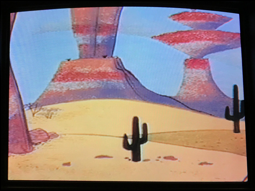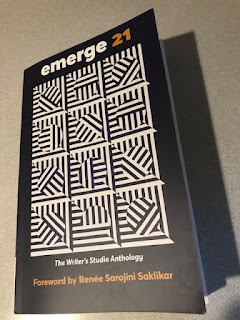I have yet to see the current Steven Shearer exhibition at the Polygon, though I did take a peek inside the gallery during the later stages of its installation and noted the works included and where they would be placed. From what I saw, this remains the art of an artist I have followed since the mid-1990s, only more so. Anyone interested in painting should see this show, for the paintings alone. A curious and unsettling mix of gothic, metallic and effete male forms "clothed" in the historic palette and brushwork of the late-19th century Symbolists.
In addition to the Globe's grudgingly positive review, the exhibition has garnered at least two more local reviews, one by Yani Kong at Galleries West, the other by Dorothy Woodend at The Tyee. These reviews, too, are grudgingly positive, with Kong concluding hers by asking if Shearer's pantings, sculptures and collages are relevant, particularly when compared to "some of the world's most relevant artists" included in the Polygon's previous Interior Infinite show, a comparison that, though intended as a compliment, does a disservice to its curator Justin Ramsay by limiting his accomplishment ("an astute reflection on race, gender and identity") to his selection and inclusion of artists without saying anything of the work that was, to put it crudely, there to represent them, to say nothing of how their work was configured and contextualized.
As for Woodend, she opens her review with a sentence ("Sometimes you can look at a work of art and appreciate the skill, concept and execution, and still not like it very much") that speaks more to personal taste than to the work at hand, a decision that refocuses the review on the critic as a computational apparatus enslaved by today's most common (relevant?) criterion of judgement: the binary like|dislike. While I too find myself repulsed by what Woodend refers to as "dude culture," I remain interested in my repulsions. Not at the dismissive level of like|dislike, but by what should follow from it. I had a similar experience recently while watching the Lord of the Rings Trilogy, simply to track variance amongst that automatonic, subservient, soldiering mob known as the Orks, of which there was little to none. For our purposes, Orks exist entirely to be feared and hated. But the mostly male figures in Shearer's paintings are more complex than that, and they bear a more considered look.
Take, for example, the subject of Shearer's Potter (2021): a willowy, Eno-esque urban figure in last night's party pants, awash in concert lighting and throwing a pot before a backdrop that includes an inventory of jarred organs. This is not your stereotypical Gulf Island potter, nor is it your androgynous 1970s prog rocker, but a confusion of signifiers in support of -- and indeed in resistance to -- some very sophisticated painting techniques. To reduce this complicated subject to a participant in "dude culture" is an abdication of the critic's role to broaden our experience, not reduce it. As for those jarred organs, they function at the level of a test: if you believe them to be souvenirs of a serial killer, then you will not "like" this work; but if you see the potter as a biologist whose hobbies include pottery, you might want to know more than what you're getting from a connoisseurial review.
As a undergrad in the early 1980s, I remember one of my profs telling us that poststructuralism has contributed to a crisis in Marxist discourse, with many of its scholars returning not to Marx's writings but to that bible of capitalism that Marx was so critical of -- Adam Smith's Wealth of Nations (1776) -- for a closer (Marxist) reading. Around that time I remember another prof telling us that first- and second-wave feminists put off by the ascendancy of Naomi Wolf's superficial The Beauty Myth (1991) have begun devising courses on "masculinity" in an effort to better understand patriarchy and, as bell hooks insists, how it affects not just women but men. Shifts like these seem unthinkable in our quick-to-signify moment, yet they are needed if the critical conversation on art is to transcend, let alone survive, our moment. And with any luck, bring Art with it.













































